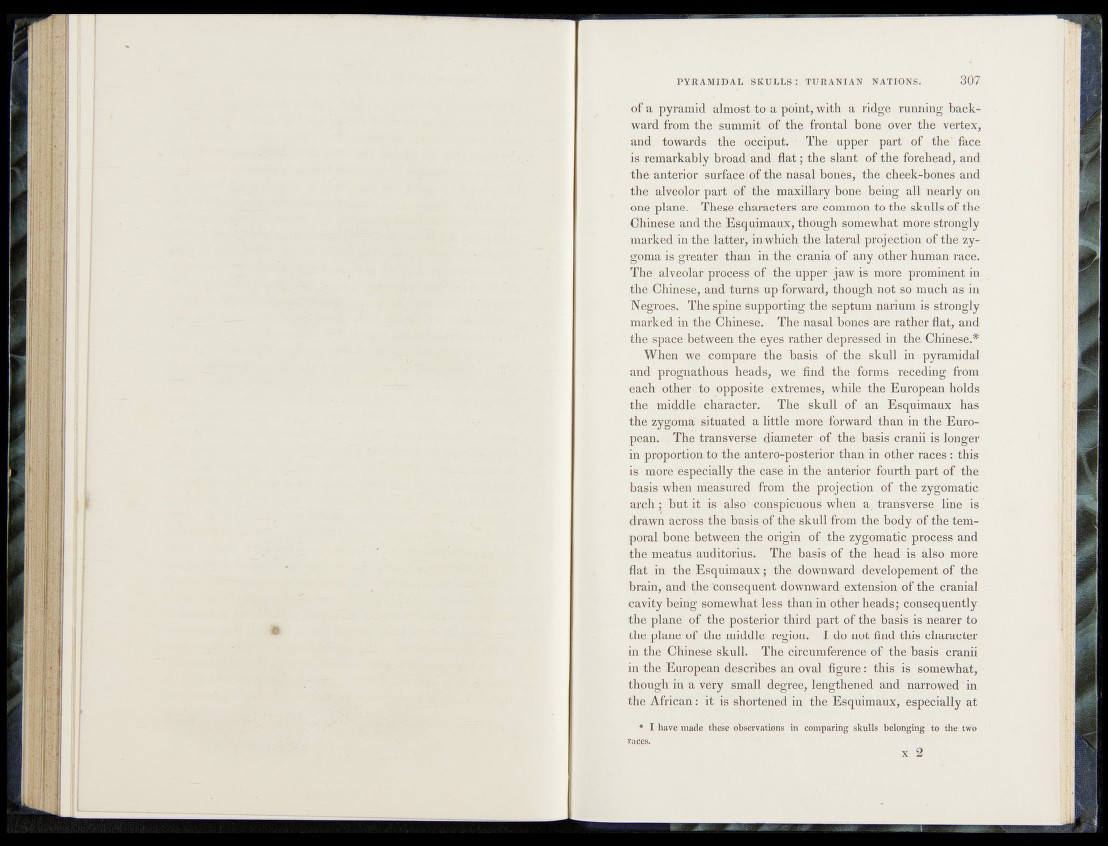
PYRAMIDAL SKULLS: TURANIAN RATIONS. 307
of a pyramid almost to a point, with a ridge running backward
from the summit of the frontal bone over the vertex,
and towards the,occiput, ■ The upper part of the' face
is remarkably broad and fla t; the slant of the forehead, and
the anterior surface of the nasal bones, the cheek-bones and
the alveolor part of the maxillary bone being all nearly on
one plane. These characters are common to the skulls of the
Chinese and the Esquimaux, though somewhat more strongly
marked in the latter, in which the lateral proj ection of the zygoma
is greater than in the crania of any other human race.
The alveolar process óf the upper jaw ;is more prominent ia
the Chinese, and turns up forward, though not so much as in
Negroes.' The spine supporting* the septum narium is strongly
marked in "the Chinese:- The nasal bones'are rather flat, and
the space-between, the eyes rather depressed in the. Chinese.*
When we compare- the basis’ ; of the skull in pyramidal
and prognathous head®, we And the .’forms receding from
each other to. opposite, extremes, while, the European holds,
tne-middle character. The skull pf an. Esquimaux has
the zygoma situated a little more forward than in the European.
, The transverse diameter o f the basis cranii is lpnger
i | | proportion to the antero-posterior-’than in other races: this
is* more especially the-case In the anterior fourth part of the
basis when measured^ from the projection of the zygomatic
arch ; but it is also conspicuous when a r transverse, line is
drawn across- the basis_pf the skull from the body of the temporal
bone between the origin of the zygomatic process and
the meatus auditorius; The basis of the head is also more
flat in the Esquimaux; the downward deyelopement of the
brain, and the "consequent downward extension, o f the cranial
cavity being somewhat less than in other heads; consequently
the plane' of the posterior third p a rt of the .basis is nearer to
the plane o,f the middle region.' ■ I do ndt* find this character
in the Chinese skull. The circumference- of the basis cranii
in the European describes an oval figure: this is somewhat,
though in a very small degree, lengthened and narrowed in
the African: it is shortened in the Esquimaux, especially at
* I have made these observations in comparing skulls belonging to the two
races.
x 2